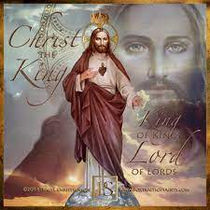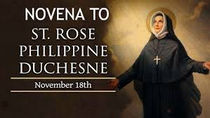The Catholic Defender: First Martyrs of the Church of Rome
- Donald Hartley

- Jun 29
- 3 min read
Updated: Jun 29
Deepertruth with special permission and aid with Franiciscan Media, a great team for the Lord

The holy men and women are also called the "Protomartyrs of Rome." They were accused of burning Rome by Nero , who burned Rome to cover his own crimes. Some martyrs were burned as living torches at evening banquets, some crucified, others were fed to wild animals. These martyrs died before Sts. Peter and Paul, and are called "disciples of the Apostles. . . whom the Holy Roman church sent to their Lord before the Apostles' death."
The memorial of the First Martyrs of the Holy Roman Church comes one day after the Solemnity of Saints Peter and Paul. The first day, June 29, is the remembrance of the two most famous martyrs who died during the persecution of Nero, St. Peter crucified upside down in 64 AD and St. Paul beheaded in 67 AD.
The Feast of the First Martyrs of the Church of Rome was established after the Second Vatican Council. This feast commemorates the sacrifices made by early Christians after they were blamed for the burning of Rome, during the reign of Nero. For this many Christians were burned alive as candles or killed in the Colosseum to entertain the emperor.
Even after Nero committed suicide, persecution of early Christian still persisted during the early days of the Roman Empire, only ending after the promulgation of the Edict of Milan by Emperor Constantine in 313 AD.

In July of 64 AD, Rome was devastated by fire. Largely made up of wooden tenements, fire was a frequent occurrence in the city. Rumor blamed the tragedy on the unpopular emperor Nero, who wanted to enlarge his palace. He accused the Christians. According to the historian Tacitus, many Christians were put to death "not so much of the crime of firing the city, as of hatred against mankind.
There were Christians in Rome within a dozen or so years after the death of Jesus, though they were not the converts of the “Apostle of the Gentiles” (Romans 15:20). Paul had not yet visited them at the time he wrote his great letter in 57-58 A.D.
There was a large Jewish population in Rome. Probably as a result of controversy between Jews and Jewish Christians, the Emperor Claudius expelled all Jews from Rome in 49-50 A.D. Suetonius the historian says that the expulsion was due to disturbances in the city “caused by the certain Christus” [Christ]. Perhaps many came back after Claudius’ death in 54 A.D. Paul’s letter was addressed to a Church with members from Jewish and Gentile backgrounds.
In July of 64 A.D., more than half of Rome was destroyed by fire. Rumor blamed the tragedy on Nero, who wanted to enlarge his palace. He shifted the blame by accusing the Christians. According to the historian Tacitus, many Christians were put to death because of their “hatred of the human race.” Peter and Paul were probably among the victims.
Threatened by an army revolt and condemned to death by the senate, Nero committed suicide in 68 A.D. at the age of 31.
Wherever the Good News of Jesus was preached, it met the same opposition as Jesus did, and many of those who began to follow him shared his suffering and death. But no human force could stop the power of the Spirit unleashed upon the world. The blood of martyrs has always been, and will always be, the seed of Christians.





















Comments